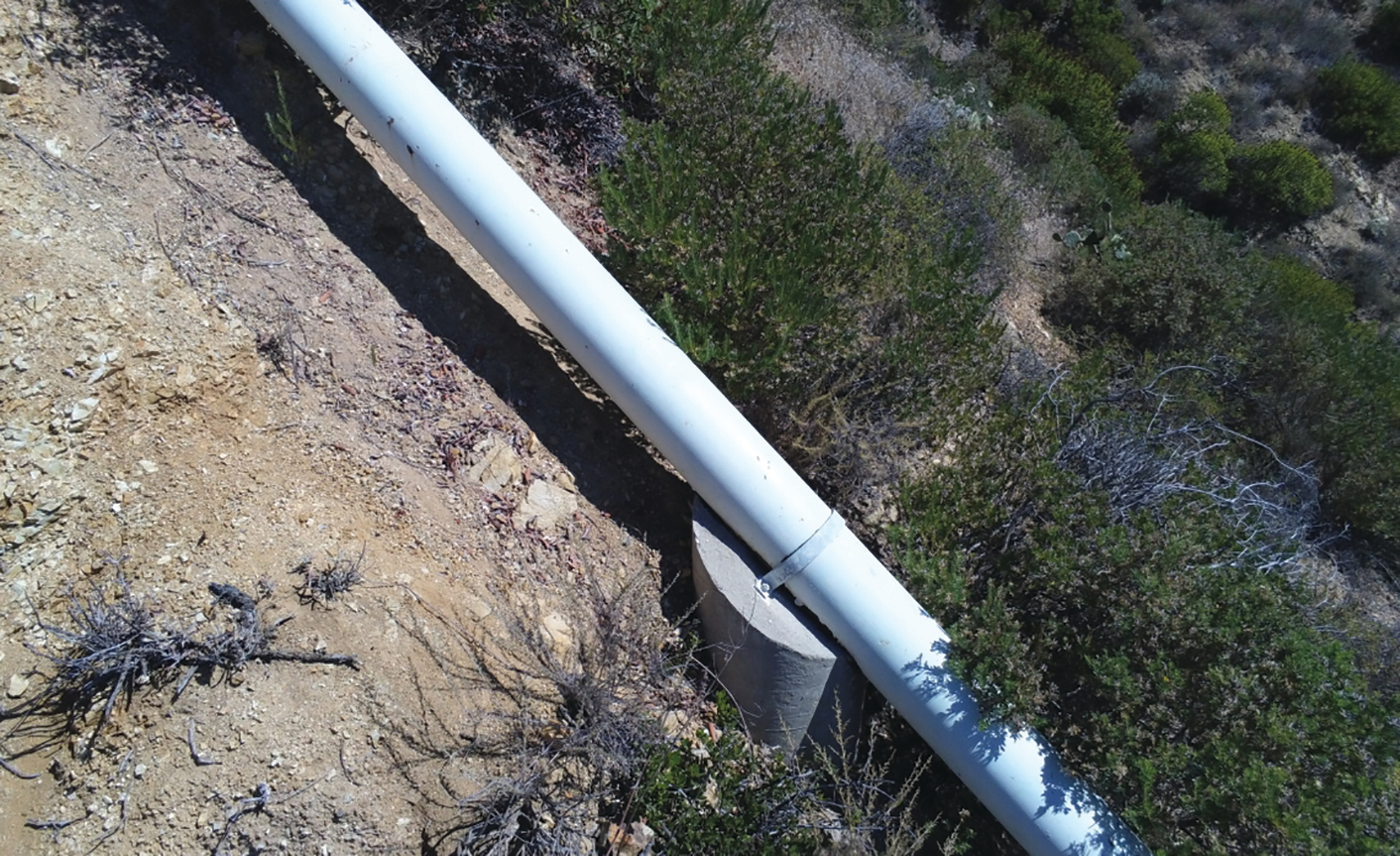Sky’s the limit!
Drone program at Harbor Springs High School really takes off.
February 2021 – Rob LaPoint’s drone class at Harbor Springs High School started four years ago as a way to show students the novice abilities of piloting unmanned aerial vehicles. Since then, it has grown to encompass so much more, opening up a sky’s-the-limit amount of potential future opportunities to the students enrolled.
When it comes to careers that utilize drone technology, each year seems to bring new avenues for their use: estimating excavation site material volume; deliveries of goods; energy industry applications; real estate photography; search-and-rescue operations; surveying; archeology; topographical mapping; logging; and infrastructure examination, such as power poles and roofs – to name just a few.
“What Rob has done for this program is incredible. He sees the opportunities this brings to students and the potential for what is to come,” said Jim Rummer, Director of Career and Technical Education for Char-Em ISD. While the UAV program is not a state-certified CTE program yet, it likely will be soon. Rummer has been advocating at the state level by demonstrating the vast career doors that can open for licensed drone pilots – and it’s close to becoming a reality.
“I expect in the next year that this program will be a state-certified CTE program, which will open up so many more opportunities for funding and opportunities, including the flow of our Char-Em ISD CTE millage dollars to the class,” said Rummer. “And on a state level, we will be proud to note that we are among the first class of its kind.”
LaPoint looks forward to the official state designation as he continues to reach out to contacts locally and Michigan-wide to grow his own skills in order to teach his students. For instance, he credited Kurtis Damerow with Emmet Drones for helping him become trained in various drone models. “If it wasn’t for him, we wouldn’t even be close to where we are at today,” LaPoint noted, adding on that particular day Damerow was coming in to class to show them how to do power pole inspections.
Students are catching on to the excitement, too, as their own skills grow.
“I have flown remote-controlled devices from a young age, so I just thought it would be fun,” said Josiah Chamberlin, a 12th grader. “Now I realize that it is a skill that is in demand all over the world.”
LaPoint and Rummer drive that point home regularly in conversations about unmanned vehicles, both above water (UAVs) and underneath it (ROVs). Char-Em ISD’s annual summer camp, Career Academy for Kids, has featured a drone program introducing both types of vehicles to young students. To further illustrate the program’s growth, this year students from Harbor Springs Middle School are being bused to Harbor High to take a STEM class, Basics of Aeronautics, to hopefully ignite their interest in the high school program and, ultimately, careers.
“What we are trying to accomplish is to show students that these are good-paying, in-demand careers that can take them anywhere in the world,” LaPoint said. “I think the message is getting through.”
The message is indeed getting across. Senior Robbie Gillette said the class opened his eyes to a career path after high school. “I would like to do oil field inspections or other jobs (using drone technology) on weekends to earn money if I decide to pursue a different route,” Gillette said.
Safety and skills go hand-in-hand
A big part of LaPoint’s classes center on safety. In fact, students are able to take a safety exam from the Unmanned Safety Institute (USI) at no charge to the student, which, while not required to legally fly drones, goes a long way toward pursuing post-secondary degrees or professional operation. Students can also take the Federal Aviation Administration (FAA) drone piloting test and become FAA-certified drone pilots in high school. These testing opportunities provide cost savings to the student, as the fees for USI and FAA testing are covered by Char-Em ISD. And both provide a big boost toward a career utilizing drones.
Several students from LaPoint’s class have passed the FAA exam already with flying colors. Some have gone on to study further at Northwestern Michigan College in Traverse City, which operates one of the premiere drone programs in the region and state. Others have used their skills to land summer jobs, while others continue to ponder how they might use the lessons they are learning as 10th through 12th graders.
Jason Slade, Director of Technical Academic Area at NMC, said the Harbor Springs program is unique in part because LaPoint was an early adopter of drone technology in the classroom.
“While drone applications in STEM and CTE classrooms are growing, Rob was on the forefront and has been the most progressive. His class gives students insight into the current and future applications of drone technology. In addition, those skills are transferable to a number of other industries as the same skills can be applied to marine applications and more,” said Slade. “We hope in the future other schools will use the Harbor Springs program as a springboard to start their own drone or unmanned systems program or add drones into an existing program. We are hopeful the collaborative grant we are working on with Char-Em will help with this.”
Slade said students from Harbor who have gone on to attend NMC’s Engineering Technology – Unmanned Aerial Systems (UAS) / Drone Specialization have been well-prepared.
“First, many enter the program with their FAA Part 107 Drone license, which allows you to safely operate a drone for all non-recreational purposes. This certification is articulated into our program which gives the student credit for one of our UAS classes, saving them time and money!” Slade said. “This credit is part of Engineering Technology – UAS degree (AAS, 2-year) and the UAS pilot certificate. It is only awarded because of what occurs in the HSHS classroom.”
More than adept at passing tests, Slade said the students show impressive competencies across the board.
“They are up-to-date on the latest drone technology and on piloting drones. Just as importantly, they are skilled troubleshooters and are competent with system integration. Once they enter our program, we add additional skills including electronics, programming, microcontrollers, advanced drone operations and then a capstone / project course that brings it all together,” Slade noted.
Funding and support boosts program
Last year, AT&T awarded the program $14,000 to purchase equipment, which LaPoint used to buy some impressive gear like Phantom 4 RTK drones for 3D mapping and volume calculations.
It’s one example of how community and organizational support continues to grow for the program. Students have been able to participate in real-life practices as well, such as using their drones and software to estimate volume of materials for Harbor Springs Excavating, and inspect roofs and power lines for the city. A few of the students’ experiences have landed them part-time summer job offers from area businesses.
Support for the program has resulted in LaPoint being able to use the latest technology for his students. A Parrot Anafi Thermal drone lets them practice roof (and home) inspections, and general heat loss. The Mavic/Phantom 4/Inspire 1 gives the students the chance to inspect power poles, practice general photography and videography.
With Harbor High School being home to a swimming pool, LaPoint and Rummer foresee growing the program to include an ROV – Remotely Operated Vehicles – that operate underwater. Once again, a host of career opportunities await those skilled in ROV operations.
“Rob is an instructor who continues to go above and beyond to make things happen for kids,” said Rummer.
For some students, having fun has gone hand-in-hand with the learning. Domitien Dante Boda, a 12th-grader, said it’s not likely he will pursue a career in drone work, but “I still want to fly drones and play around with them, as long as I follow the regulations.”
Senior Luke Baker said he enrolled in the class because it seemed fun, and in the process learned “how to think critically under pressure and how to evaluate risk.”
For that reason, Slade, the NMC director, said the class is preparing students for whatever their future might bring.
“The skills they are learning can be applied to so many applications and systems. We will see drone technology morph and change over the coming years. However, the problem-solving, integration, and technical skills they are learning can be applied to so many jobs and industries,” Slade added. “It is an exciting time to be involved in this technology and any field related to STEM.”
Sourced from www.charemisd.org













